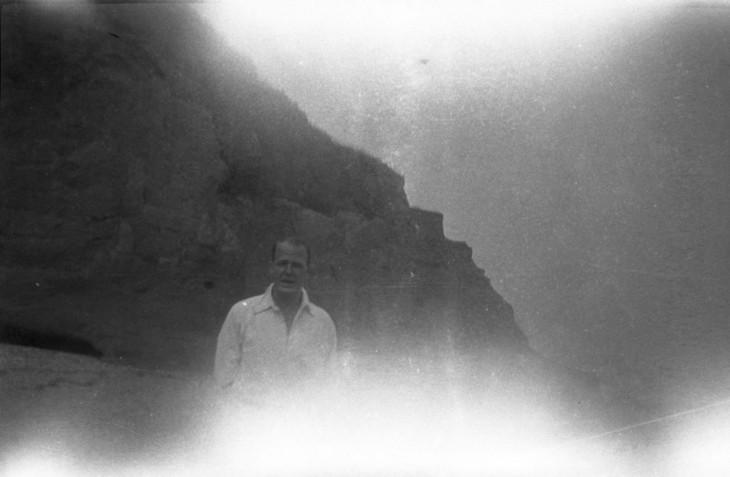Ben Nicholson (?) Photograph of Henry Moore standing in front of a cliff, Happisburgh 1931
In 1930 and 1931 Moore and his friends took summer holidays together on the coast of Norfolk, at Happisburgh. This photograph of Moore standing in front of a cliff face is believed to have been taken by the painter Ben Nicholson in 1932. During these vacations Moore became interested in the shapes of the weathered ironstone and flint pebbles found on the beach, and how the natural processes of erosion can create interesting rock shapes. In 1932 Moore explained: ‘During visits to the Norfolk coast I began collecting flint pebbles. These showed Nature’s treatment of stone and the principle of the opposition of bumps and hollows. Then I realised that a work loses in interest through having its component forms too similar in size, and began putting small forms against large forms, enlarging some and reducing others’. Henry Moore, cited in Arnold Haskell, ‘On Carving’, New English Weekly, 5 May 1932, p.65–6, reprinted in Alan Wilkinson (ed.), Henry Moore: Writings and Conversations, Aldershot 2002, p.189.
How to cite
Ben Nicholson (?), Photograph of Henry Moore standing in front of a cliff, Happisburgh, 1931, in Henry Moore: Sculptural Process and Public Identity, Tate Research Publication, 2015, https://www

